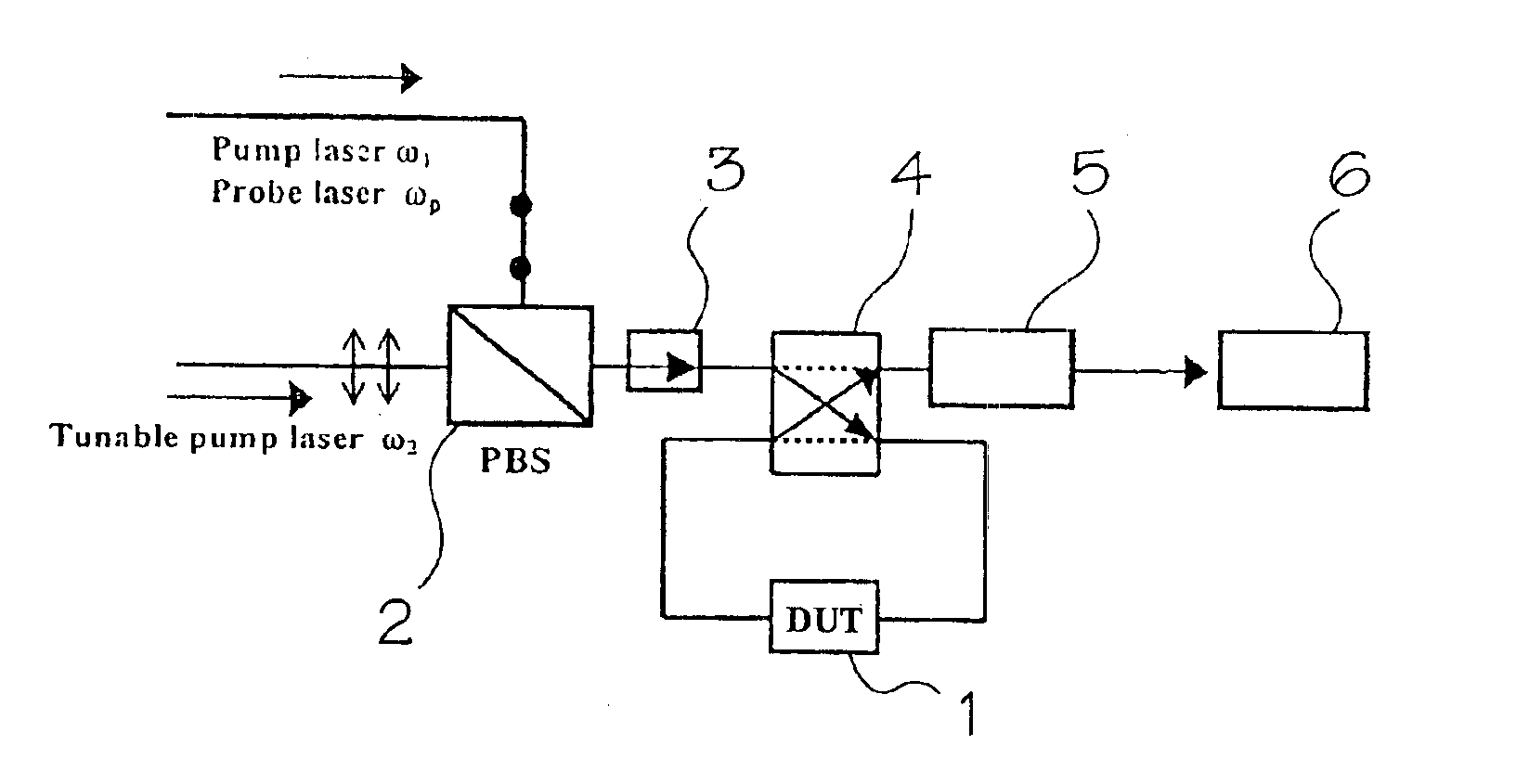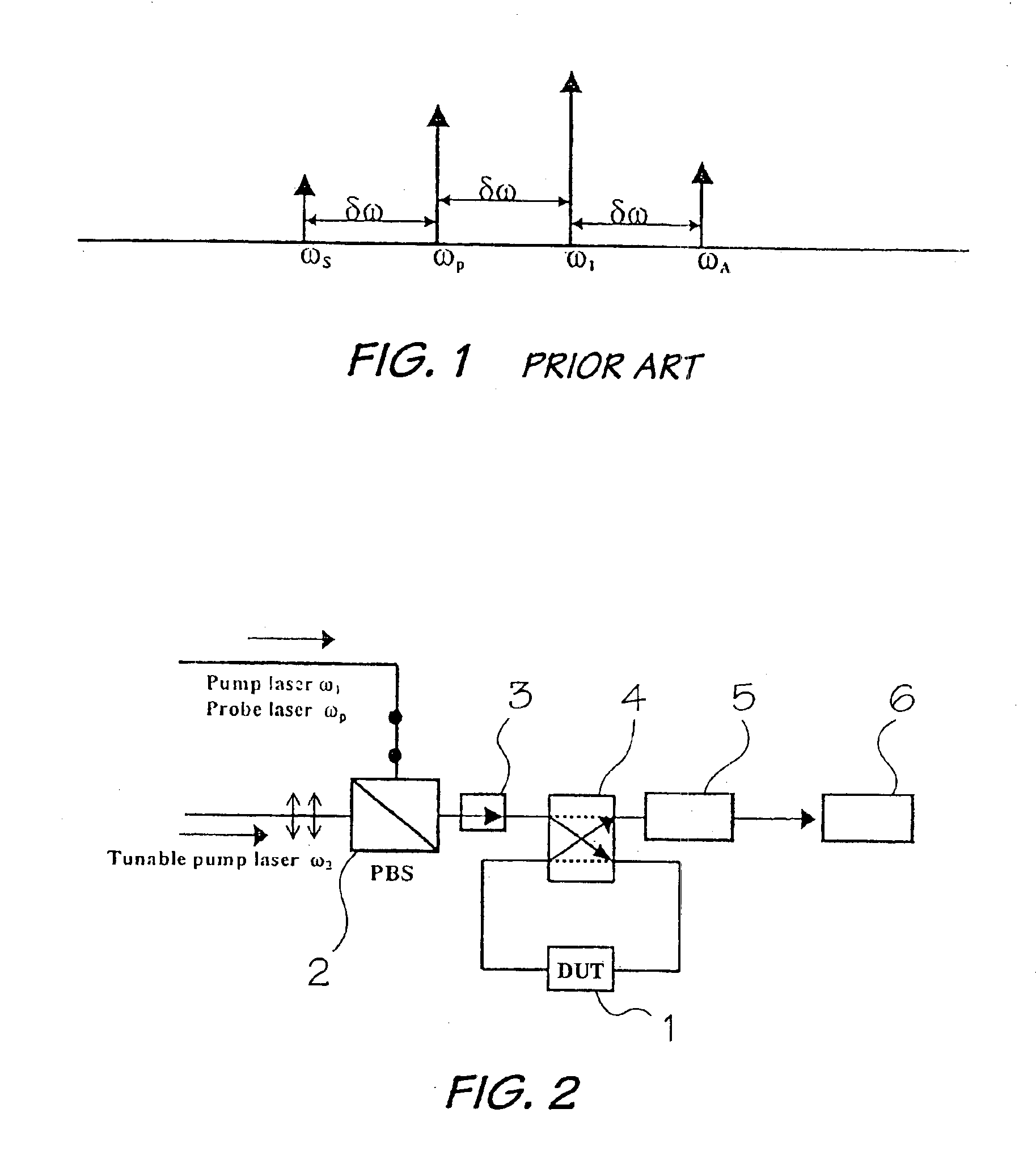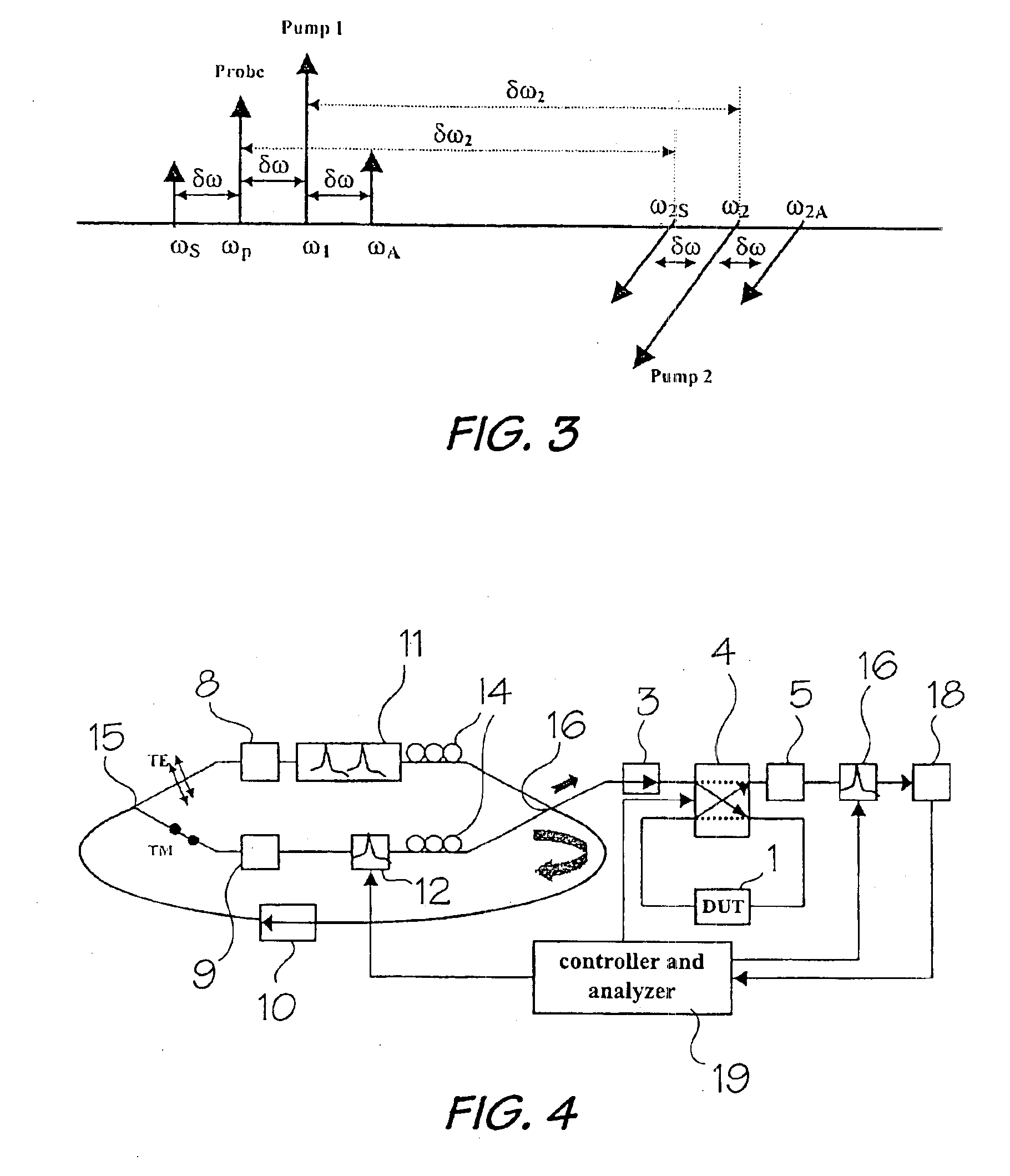Method and apparatus for measuring polarization-mode dispersion
a technology of polarization-mode dispersion and optical devices, which is applied in the direction of measurement devices, instruments, structural/machine measurement, etc., can solve the problems of limited polarization-mode dispersion measurement accuracy of this technique, totally destroy the measured, and difficult to maintain a motionless condition
- Summary
- Abstract
- Description
- Claims
- Application Information
AI Technical Summary
Benefits of technology
Problems solved by technology
Method used
Image
Examples
Embodiment Construction
[0029]In a nonlinear optical material, wave-mixing arises from a nonlinear optical response when more than one wave (signal and pump) is present. The outcome of this effect is generation of another wave with an amplitude proportional to the product of the signal and the pump amplitudes. The phase and the frequency of the generated waves are the sum and difference of those of the interacting waves. FIG. 1 shows a traditional schematic of an optical spectrum generated by four-wave mixing in a semiconductor optical amplifier based on using two co-polarized laser beams. In this scheme the amplitude and the optical signal-to-noise ratio of the FWM products decrease quickly with increasing frequency shift between the pump and the probe signal frequencies [see A. Uskov et al, IEEE J. Quantum Electron 30, 1769-1781 (1994)]. In this case, there is described a broad-band orthogonal-pump (BOP) scheme based on using two orthogonally polarized pumps which give constant amplitude and optical sign...
PUM
 Login to View More
Login to View More Abstract
Description
Claims
Application Information
 Login to View More
Login to View More - R&D
- Intellectual Property
- Life Sciences
- Materials
- Tech Scout
- Unparalleled Data Quality
- Higher Quality Content
- 60% Fewer Hallucinations
Browse by: Latest US Patents, China's latest patents, Technical Efficacy Thesaurus, Application Domain, Technology Topic, Popular Technical Reports.
© 2025 PatSnap. All rights reserved.Legal|Privacy policy|Modern Slavery Act Transparency Statement|Sitemap|About US| Contact US: help@patsnap.com



